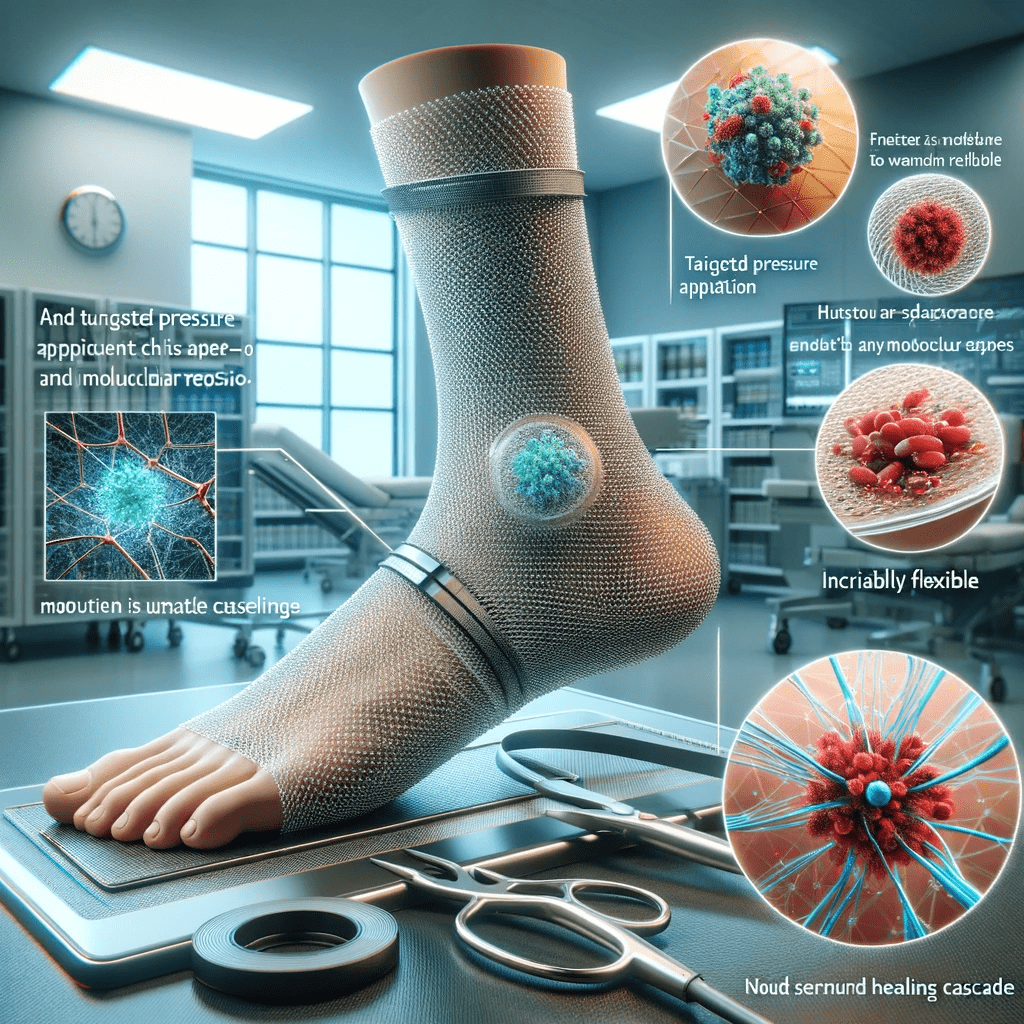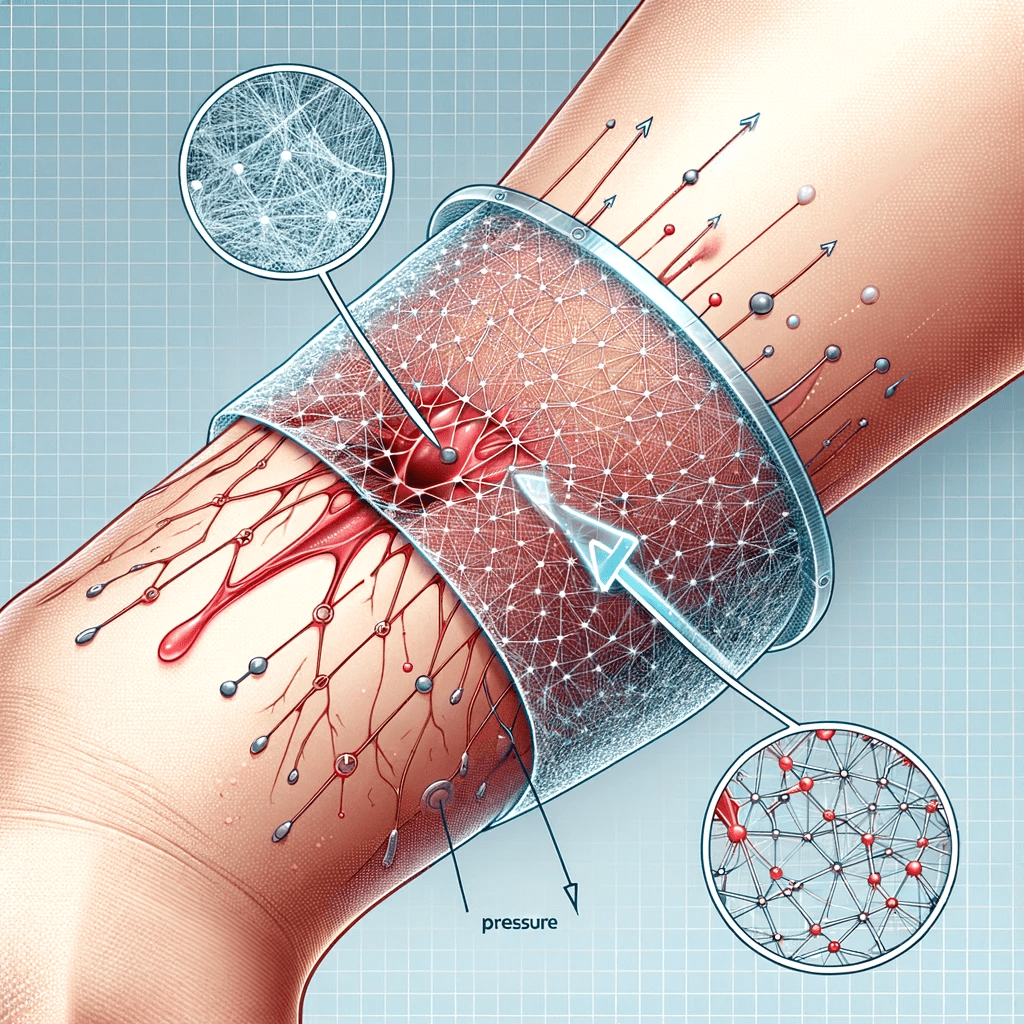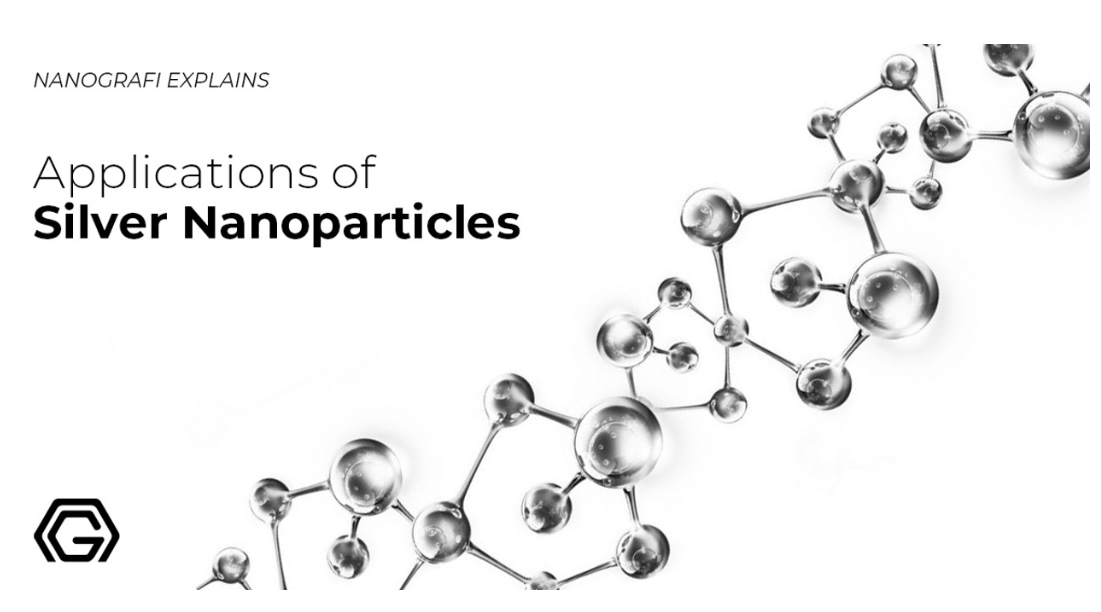Wound Healing Applications: Nano Fiber Tourniquet
In the domain of wound healing, recent technological leaps have brought forth innovative solutions like nano fiber tourniquets, heralding a new era in managing injuries.
These breakthroughs promise accelerated healing processes and enhanced patient recovery. This comprehensive exploration will delve into the profound significance, intricate mechanisms, versatile applications, and potential future developments of nano fiber tourniquets in the realm of wound care. Nanografi, with its advanced material technology and solutions, is positioned to play a pivotal role in this frontier, offering innovative contributions that align with the cutting-edge developments in nanotechnology and material science.
Introduction
In the ever-evolving landscape of medical innovation, breakthroughs in wound healing have been pivotal in transforming the management of injuries and facilitating swifter recoveries for patients. Among the array of advancements, nano fiber tourniquets have emerged as a beacon of promise in the pursuit of effective wound care solutions. These groundbreaking devices, crafted from nanoscale fibers, represent a remarkable convergence of cutting-edge materials science and medical technology.
The realm of wound healing has historically grappled with challenges in achieving efficient hemostasis, clot formation, and expedited healing. Nano fiber tourniquets stand at the forefront of addressing these challenges, embodying a fusion of precision engineering and biomedical innovation. Their architecture, characterized by an intricate network of nanoscale fibers, harnesses unique properties such as high surface area-to-volume ratio, inherent flexibility, and biocompatibility—traits that underpin their exceptional functionality in controlling bleeding and promoting the body's natural healing processes. The mechanisms governing nano-fiber tourniquets encapsulate a sophisticated interplay of controlled pressure application and clot promotion without causing collateral tissue damage. This delicate balance of targeted pressure at the wound site triggers the body's coagulation cascade, expediting the formation of stable clots essential for initiating the healing cascade.
The applications of nano-fiber tourniquets extend across a diverse spectrum of medical scenarios, from emergency trauma care to chronic wound management. Their efficacy in swiftly halting excessive bleeding in critical situations such as accidents, combat injuries, or surgical procedures has positioned them as indispensable tools in saving lives and minimizing complications. Furthermore, their potential to expedite the healing trajectory of chronic wounds, often notorious for delayed closure, offers renewed hope for patients battling ailments like diabetic ulcers or pressure sores. However, as these nano-fiber tourniquets march forward as pioneers in wound care, they encounter an array of challenges. Ensuring uniform pressure distribution, optimizing materials for extended use, and navigating regulatory landscapes are among the obstacles that researchers and developers strive to overcome. Nevertheless, the trajectory of advancements in nano-fiber tourniquets heralds a transformative era in wound care, promising improved patient outcomes and reshaping the paradigms of contemporary medical practice.
What are Nano-Fiber Tourniquets?
Nano-fiber tourniquets epitomize the pinnacle of modern medical engineering. Crafted from nanoscale fibers, these specialized devices boast exceptional properties such as an incredibly high surface area-to-volume ratio, remarkable flexibility, and inherent biocompatibility. Engineered precisely to control bleeding in scenarios where traditional methods fall short, nano-fiber tourniquets leverage their ability to apply targeted pressure to the injured area. This strategic pressure application efficiently restricts blood flow, thereby triggering the body's clotting mechanisms and instigating the complex cascade of wound healing processes.
These tourniquets are meticulously crafted from nanoscale fibers, often made of materials like polymers or biodegradable substances, intricately woven or assembled into a specialized structure. The resulting nano-fiber architecture imparts unique properties that differentiate them from traditional tourniquets or hemostatic agents. One of the defining features of nano-fiber tourniquets is their exceptionally high surface area-to-volume ratio. This characteristic amplifies their efficacy in controlling bleeding by maximizing contact with the wound site, facilitating rapid interaction with blood components, and expediting the clotting process. Additionally, the nanoscale dimensions of these fibers afford enhanced flexibility and conformability, enabling them to adapt seamlessly to varying wound shapes and sizes. This flexibility is a crucial aspect, ensuring that pressure is applied precisely to the injured area without causing undue stress on surrounding tissues.

Figure 1. Nano-fiber tourniquet in action - enhanced hemostatic design and application.
Biocompatibility, a fundamental criterion in medical device design, is inherent in nano-fiber tourniquets. The materials used in their construction are carefully selected to ensure compatibility with biological systems, minimizing the risk of adverse reactions or tissue irritation upon application. This biocompatibility feature is pivotal, especially in scenarios where the tourniquet may need to remain in contact with the wound for extended periods. The manufacturing processes employed in creating nano-fiber tourniquets can vary, ranging from electrospinning techniques to advanced nano-assembly methods. Electrospinning involves the controlled deposition of fibers from a polymer solution or melt, producing nano-scale fibers that can be subsequently woven or structured into the desired tourniquet form. On the other hand, nano-assembly techniques might involve self-assembly processes or precise manipulation of nanomaterials to achieve the desired architecture and properties. The design considerations for nano-fiber tourniquets encompass a meticulous balance between optimizing their clotting efficacy and ensuring ease of application.
As research and development in nano-fiber technologies progress, efforts are focused not only on improving the performance and biocompatibility of these tourniquets but also on exploring novel functionalities. These include incorporating antimicrobial properties, controlled release of therapeutic agents, or even integrating sensors for real-time monitoring of wound healing parameters, further expanding the potential applications and utility of nano-fiber tourniquets in the evolving landscape of wound care.
Would you like to know about carbon nanofibres (CNFs)? Learn now.
Mechanism of Action
The essence of nano-fiber tourniquets lies in a meticulously designed mechanism tailored to deliver precision assistance. Their functionality revolves around the nuanced application of controlled pressure on wounds, skillfully avoiding collateral tissue damage. This precisely calibrated pressure plays a pivotal role in staunching blood flow, enabling the body's intrinsic clotting factors to spring into action and initiate hemostasis. Moreover, the intricate nano-fiber architecture actively facilitates accelerated platelet aggregation, fostering the formation of a robust and stable clot—a critical milestone in the journey of wound healing.
Upon application to an injured area, nano-fiber tourniquets capitalize on their finely engineered architecture, which allows for targeted and controlled pressure. This pressure is strategically applied to the wound without causing damage to the surrounding tissues, a crucial aspect that distinguishes these devices from conventional methods of hemostasis. The primary function of nano-fiber tourniquets is to restrict blood flow at the wound site. By doing so, these tourniquets prompt the body's natural clotting mechanisms to spring into action. The controlled pressure helps in initiating hemostasis by promoting platelet activation and aggregation, leading to the formation of a stable clot at the injury site. This clot is pivotal in stemming the flow of blood and sealing the wound, initiating the initial phases of the wound healing cascade.
The nanoscale structure of these tourniquets plays a significant role in fostering clot formation. The high surface area-to-volume ratio of the nano-fibers allows for extensive interaction with blood components, expediting the clotting process. Moreover, the specific characteristics of the nano-fibers, such as their composition and surface properties, can be tailored to further augment clotting efficiency and stability. Overall, the mechanism of action of nano-fiber tourniquets revolves around their ability to apply targeted and controlled pressure to wounds, promoting efficient clot formation while mitigating tissue damage. By harnessing the properties of nanoscale materials and precision engineering, these tourniquets offer a sophisticated and effective approach to managing bleeding, thereby expediting the healing process and improving outcomes for individuals with various types of injuries or wounds.

Figure 2. Simplified illustration of advanced wound healing technology.
Applications in Wound Healing
The versatility of nano-fiber tourniquets extends across an extensive spectrum of medical exigencies:
1. Trauma Care: In dire situations such as accidents or battlefield injuries, rapid and effective control of bleeding is paramount. Nano-fiber tourniquets emerge as a portable and efficient lifesaving tool, swiftly halting excessive blood loss and providing crucial time for immediate medical intervention.
2. Surgical Procedures: Precision and meticulous hemostasis are imperatives in surgical settings to minimize bleeding and ensure successful outcomes. Nano-fiber tourniquets offer surgeons a finely-tuned instrument for managing bleeding with exceptional precision, thereby reducing intraoperative complications and enhancing post-operative recovery.
3. Chronic Wound Management: Chronic wounds, such as diabetic ulcers or pressure sores, pose ongoing challenges in achieving closure. Nano-fiber tourniquets offer a beacon of hope by expediting clot formation and stimulating tissue regeneration, accelerating the healing trajectory for these persistent wounds.
4. Military and Field Medicine: In remote or military settings where immediate medical care might be limited, nano-fiber tourniquets serve as indispensable tools for stabilizing injured individuals. These devices play a crucial role in preventing excessive blood loss and sustaining the patient until comprehensive medical attention becomes available.
Silver nanoparticles are used in the construction of nano tourniquets. For more detail, visit our blog bage.
Future Prospects and Challenges
The evolution of nano-fiber tourniquets in mainstream wound care holds promise but also encounters hurdles. Ongoing research endeavors aim to enhance their biocompatibility, durability, and scalability for widespread adoption. Challenges include ensuring uniform pressure distribution, minimizing tissue trauma risk, and optimizing materials for prolonged use without compromising efficacy. Addressing these challenges is essential for maximizing the potential of nano-fiber tourniquets in revolutionizing wound care.
Conclusion
Nano-fiber tourniquets signify a revolutionary leap in wound healing applications. Their prowess in effectively controlling bleeding, expediting clot formation, and accelerating healing processes holds immense promise across diverse medical settings. As technological advancements continue to shape their development, nano-fiber tourniquets stand poised to redefine wound management, heralding a new chapter in patient care and recovery. This comprehensive exploration underscores the pivotal role of nano-fiber tourniquets in wound care, elucidating their mechanisms, versatile applications, and the potential for groundbreaking advancements. With ongoing research and innovation, these cutting-edge devices are on the brink of transforming wound management, ushering in a new era of enhanced patient care on a global scale. Discover the future of wound care with Nanografi's innovative nano-fiber tourniquets. Connect with us and join the revolution in advanced material applications.
References
Blanco-Fernandez, B., Castaño, O., Mateos-Timoneda, M. Á., Engel, E., & Pérez-Amodio, S. (2021). Nanotechnology Approaches in Chronic Wound Healing. Advances in Wound Care, 10(5), 234. https://doi.org/10.1089/WOUND.2019.1094
Carbon Nanofiber (CNF) - Nanografi Nano Technology. (n.d.). Retrieved January 23, 2024, from https://nanografi.com/blog/carbon-nanofiber-cnf/
Ghajarieh, A., Habibi, S., & Talebian, A. (2021). Biomedical Applications of Nanofibers. Russian Journal of Applied Chemistry, 94(7), 847. https://doi.org/10.1134/S1070427221070016
Hemostasis - Wikipedia. (n.d.). Retrieved January 23, 2024, from https://en.wikipedia.org/wiki/Hemostasis
Jiang, T., Li, Q., Qiu, J., Chen, J., Du, S., Xu, X., Yang, X., Chen, Z., Chen, T., & Wu, Z. (2022). Nanobiotechnology: Applications in Chronic Wound Healing. International Journal of Nanomedicine, 17, 3125. https://doi.org/10.2147/IJN.S372211
Liu, X., Xu, H., Zhang, M., & Yu, D. G. (2021). Electrospun Medicated Nanofibers for Wound Healing: Review. Membranes, 11(10). https://doi.org/10.3390/MEMBRANES11100770
Recent Posts
-
Advanced Materials for Unmanned Aerial Vehicle (UAV) Protection Against Laser
Consider a UAV on a critical mission, rendered inoperative by a sudden laser attack. With the increa …26th Jul 2024 -
Simulation and Modeling of Material Properties
Our world is composed of a dazzling array of materials, each with its own unique properties that dic …19th Jul 2024 -
Advanced Coatings for Superior Corrosion and Wear Resistance
Corrosion and wear pose significant challenges across various industries, leading to substantial eco …12th Jul 2024






